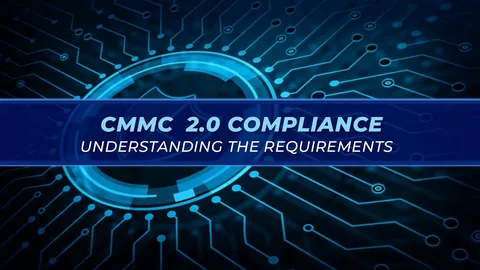Auditors don’t look for flashy presentations or long explanations—they look for clear, signed proof that security policies are not just written, but lived. A simple signature and a date can mean the difference between passing and failing an assessment. For companies preparing for CMMC level 2 compliance, these small details carry heavyweight responsibility.
Mandatory Signatures Establish Accountability on Compliance Records
Signatures are more than formalities. They prove that someone reviewed and accepted responsibility for what’s written on the page. Whether it’s a system security plan or an incident response policy, signed records create a trail that shows key personnel are engaged in maintaining security controls. In the eyes of a CMMC RPO or c3pao assessor, that signature anchors the policy to a real person who can answer for it.
Under CMMC level 2 requirements, signatures help satisfy the need for clearly defined roles and responsibilities. Without them, documents feel incomplete—like a contract with no one on the hook. A signed document tells an auditor, “Yes, this was reviewed. Yes, this is real. And yes, someone owns this.” That ownership is the backbone of accountability in any compliance-driven environment.
Accurate Dating Ensures Timely Evidence for Auditors
A signature is only as useful as the date next to it. That date tells the story of how current the document is and whether the organization is keeping up with policy reviews. For companies working toward CMMC level 2 compliance, stale documents can flag bigger issues—like missed updates to evolving security practices.
C3pao auditors check dates to confirm that documentation aligns with the organization’s timeline of control implementation. If something is signed three years ago and hasn’t been touched since, it’s a red flag. Accurate dating isn’t about formality—it’s about trust. It shows that the company is maintaining a living, breathing security program that evolves with threats and compliance requirements.
Sequential Document Versions Prevent Assessment Confusion
Keeping documents in sequential order with version control isn’t just about neatness. It prevents confusion during audits and helps teams understand what changed, who approved it, and why. CMMC RPOs often flag inconsistencies in documentation when versioning is sloppy or unclear.
In the CMMC compliance process, versioning plays a practical role in tracking control maturity. An updated incident response policy, for instance, should reflect lessons learned from past incidents or testing exercises. Without clear version tracking, an organization risks presenting outdated or overlapping guidance. Proper versioning paired with consistent dating allows auditors to see growth over time and builds credibility in the overall security posture.
Official Authorization Marks Support Control Verification
Documents that include clear authorization marks—signatures from decision-makers—demonstrate internal approval of policies and procedures. These marks aren’t just a check-box for compliance; they show that leadership has reviewed and accepted responsibility for the defined security controls. This is an important part of meeting CMMC level 2 requirements, where documented approval from designated personnel is often required for validation.
Control verification depends on evidence that policies are not only created but actively approved and enforced. Signatures from IT directors, CISOs, or security managers show a top-down commitment to security. That kind of visibility reassures c3pao auditors that security isn’t siloed to one department—it’s an organization-wide priority.
Chronological Filing Builds a Clear Audit Trail
An audit trail with a logical, chronological order can make assessments much smoother. Documents signed and filed in sequence allow an auditor to trace decisions, actions, and updates as they happened. This is especially important under CMMC level 2 compliance, where timelines of implementation and review matter.
Proper chronological filing makes the auditor’s job easier—and that’s always a good thing. If a c3pao can flip through a folder and clearly see when policies were reviewed, who approved them, and how they’ve changed, it speeds up the process and reduces scrutiny. It’s a simple organization strategy that adds real weight to your documentation package.
Signed Policies Verify Leadership Endorsement of Security Measures
Leadership buy-in is essential in proving that security policies are more than just words on paper. Signatures from executives or department heads show that policies reflect company-wide priorities. It’s one thing to write a data access policy—it’s another to have it signed off by someone with authority to enforce it.
CMMC level 2 compliance stresses that security should be embedded at every level of an organization. A signed policy helps confirm that message. It shows the company isn’t just reacting to compliance requirements—it’s making them part of the leadership playbook. For assessors, that signature signals a top-down commitment that strengthens the case for certification.
Timestamped Documentation Demonstrates Active Control Implementation
Timestamped documentation—whether for control testing, procedure updates, or training records—proves that security measures are actively being used, not just written down once and forgotten. It gives a real-world view of how policies are implemented over time. That’s a big deal in assessments, where CMMC compliance requirements call for evidence of active, ongoing control execution.
Timestamps go beyond simply stating that something happened. They give context. A policy updated six months ago shows an ongoing effort. A training log from last week shows current engagement. In CMMC level 2 compliance, timestamps can speak louder than words, telling assessors that your organization treats security as a continuous process—not a one-time task.


